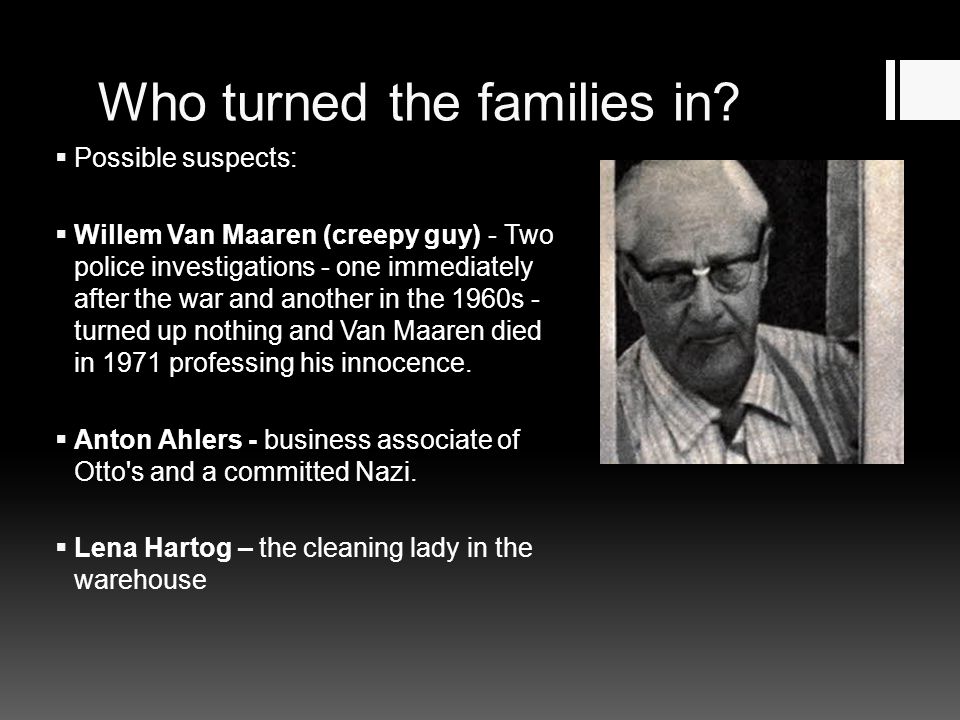


Titled “ Anne Frank: A Cold Case Diary,” the investigative project was initiated by filmmaker Thijs Bayens and supported through crowd funding. So the team has enlisted the Amsterdam-based data company Xomnia to develop algorithms that will analyze the documents, and perhaps reveal connections that have never been noticed before. The trove of information is so large that “a human in their lifetime might not be able to review” it, Pankoke tells Stephanie van den Berg and Anthony Deutsch of Reuters. Pankoke and his team are compiling a huge database of other documents that may contain information relevant to the Frank case: lists of Nazi informants, lists of Jews who were turned over to the authorities, names of Gestapo agents who lived in Amsterdam, police records and so on. It is believed, however, that documents pertaining to Anne Frank and other residents of the annex were destroyed in a 1940s bombing. notes in the Washington Post, the betrayer of the Frank family shouldn’t be hard to find Nazis kept detailed records of all arrests and informants. But the most innovative aspect of the investigation is its use of big data analysis-a technology that has only emerged within the past decade-to comb through reams of documents relevant to the case. Vince Pankoke, who tracked Colombian drug traffickers in recent years at the FBI, will lead a multidisciplinary team of experts, among them historians, psychological profilers and police detectives. Now, according to Daniel Boffey of the Guardian, a retired FBI agent has launched an investigation into the enduring historical mystery, hoping to find out once and for all who betrayed the young diarist. Many experts believe that someone alerted Nazi authorities to the hiding place, but the identity of the culprit has never been conclusively determined. On a warm August morning in 1944, SS officers stormed into an Amsterdam warehouse and arrested Anne Frank, her parents, her sister and four other Jews who had been hiding in a secret annex at the back of the building.


 0 kommentar(er)
0 kommentar(er)
